1. Narwhals – The Original Unicorns of the Sea
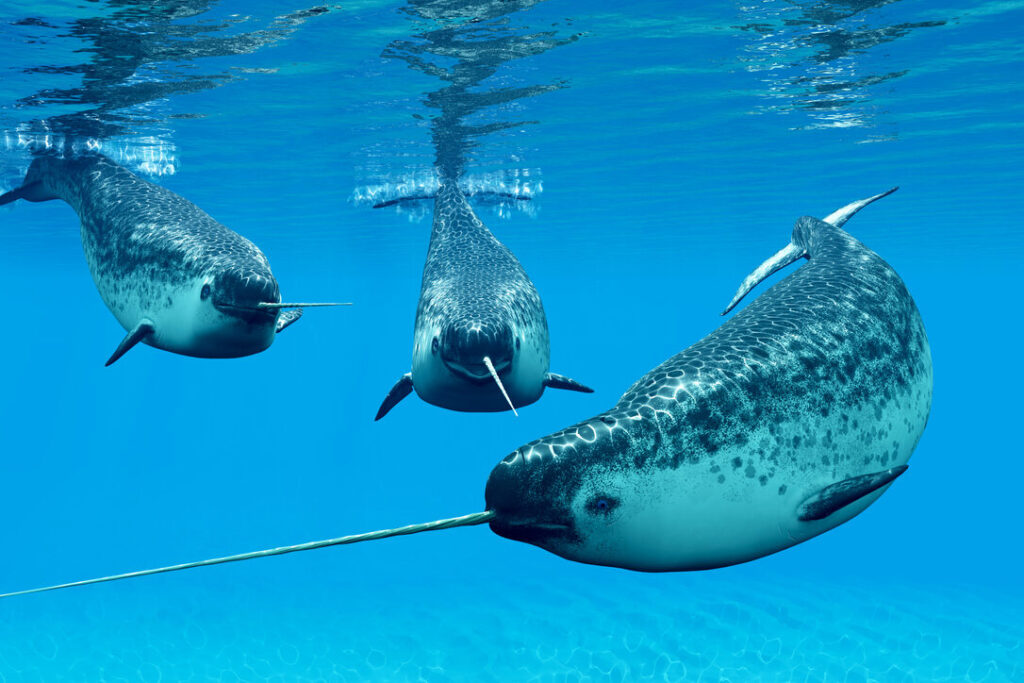
Long before unicorns became symbols of magic and fantasy, medieval traders were selling their horns—except they weren’t actually unicorn horns at all. They were narwhal tusks, taken from mysterious creatures that roamed the Arctic’s icy waters. These long, spiraled teeth, which can grow up to ten feet, were believed to hold magical properties, from curing diseases to neutralizing poison. Kings and queens paid fortunes for them, convinced they had stumbled upon the secret to immortality. To them, these tusks were proof that unicorns were real and that magic existed in some faraway, frozen land. Vikings even fueled the legend, selling narwhal tusks as relics from mythical beasts, creating an entire black market for so-called “unicorn magic.”
In reality, narwhals are not mystical creatures but rather deep-sea mammals with one of nature’s strangest dental mutations. Scientists still debate why they have these enormous teeth, with theories ranging from echolocation to mating displays or even dueling tools. What’s undeniable is that narwhals are just as fascinating as the unicorns they inspired. But if you thought a unicorn in the ocean was strange, wait until you hear about the monster that made sailors believe in a legendary sea terror.
2. Giant Squid – The Terror of the Deep
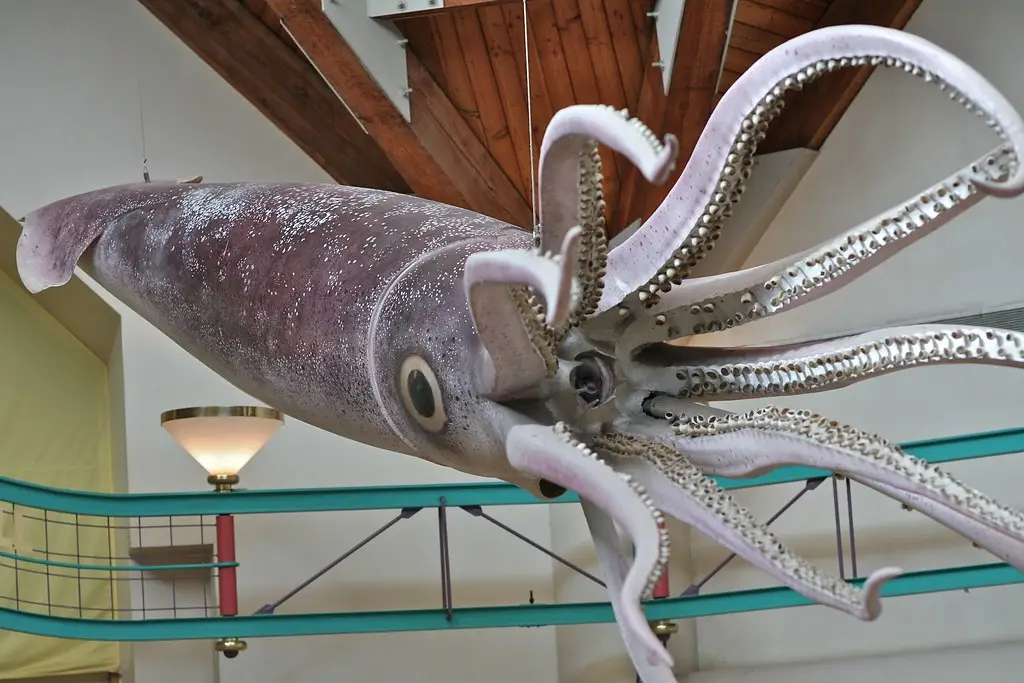
For centuries, sailors feared one nightmare above all: the kraken. This massive, tentacled beast was said to rise from the depths, wrap its monstrous arms around ships, and drag them into the abyss. The tales were so widespread that even serious naval officers warned about these creatures lurking in the open ocean. But the kraken wasn’t just a figment of the imagination—it was based on the elusive giant squid, a real creature that can grow over 40 feet long, with dinner-plate-sized eyes and suckers lined with razor-sharp hooks. These deep-sea giants engage in battles with sperm whales, leaving behind enormous scars on their predators, proving they are not just passive deep-sea dwellers.
Unlike their mythical counterpart, giant squids don’t hunt ships or terrorize sailors, but their eerie, otherworldly appearance makes them one of the most mysterious animals on Earth. Until recent times, no one had ever seen a live giant squid in its natural habitat, which only added to the myth. Even today, they remain one of the most elusive creatures in the ocean. But if you thought sea monsters were unsettling, wait until you learn how one sluggish, gentle animal tricked sailors into believing in mermaids.
3. Manatees – The Sad, Chubby Mermaids
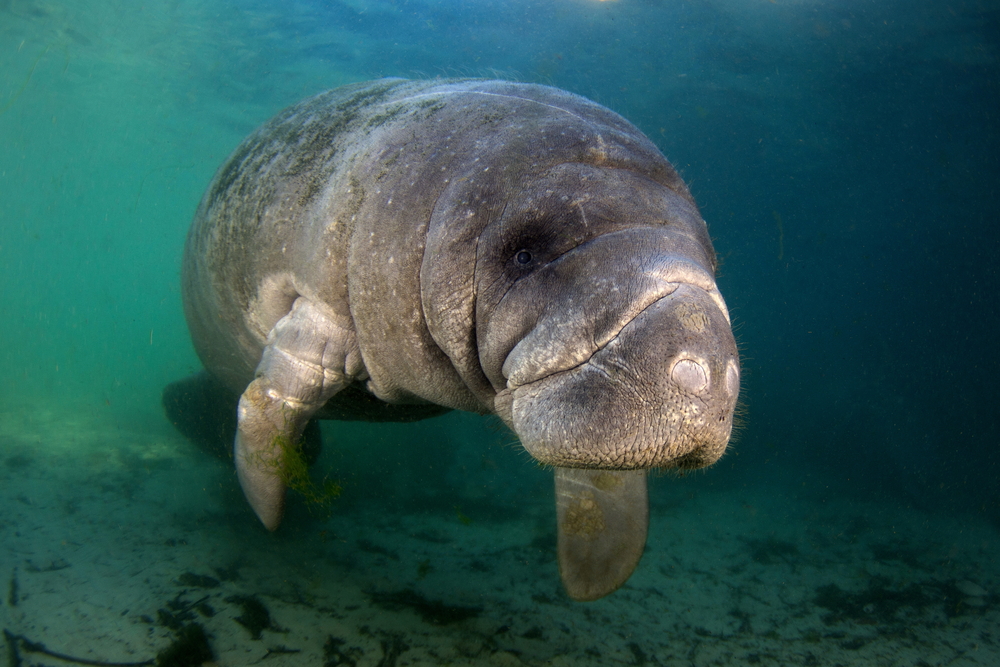
Christopher Columbus and early explorers wrote about strange, half-human creatures emerging from the water—mermaids, they claimed, with alluring voices and fish-like tails. The reality? They were probably looking at manatees. These round, slow-moving marine mammals have vaguely human-like faces, and when seen from a distance (or after months at sea with poor eyesight and dehydration), it’s not hard to see how a lonely sailor could mistake one for something more enchanting. Manatees even have a habit of poking their heads above water, reinforcing the illusion that they could be humanoid.
Unlike the mesmerizing sirens of legend, manatees spend most of their time grazing on seagrass, not luring sailors to their doom. They are gentle, social creatures that glide through shallow waters, completely unaware of the legends they have inspired. Despite their docile nature, they were hunted for centuries, nearly pushing them to extinction. Today, they serve as a reminder that myths often have roots in reality—though the truth is sometimes far less glamorous. But manatees aren’t the only marine animals with a mythical alter ego—another sea creature became the inspiration for the most feared monster of the deep.
4. Oarfish – The Living Sea Serpent

Imagine pulling in your fishing net and suddenly seeing a 30-foot-long, ribbon-like creature with silvery scales and a flowing red mane slithering in the water. If you were a 15th-century fisherman, you’d probably assume you’d just encountered a sea dragon. The oarfish, a rarely seen deep-sea giant, is likely the real-world basis for countless sea serpent myths. Unlike eels, which move in a snakelike fashion, oarfish swim vertically, making them appear even more otherworldly.
For centuries, people believed these creatures were omens of disaster, appearing before earthquakes and tsunamis. Even today, some cultures hold onto the belief that seeing an oarfish means trouble is coming. Scientists, however, suggest that when oarfish surface, it’s likely due to environmental changes rather than supernatural warnings. Regardless of the truth, their ghostly presence in the ocean depths continues to fuel myths and legends. And while sea serpents may send shivers down your spine, they are nothing compared to the real-life lizard that inspired fire-breathing dragons.
5. Komodo Dragons – The Closest Thing to a Fire-Breathing Beast
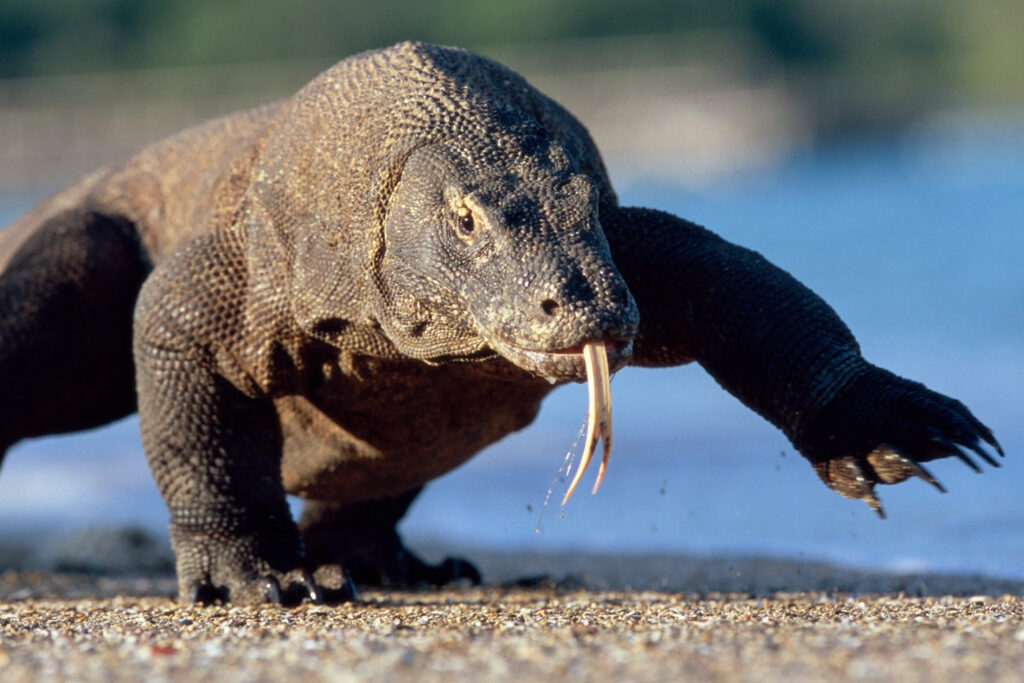
Dragons are the ultimate mythical creatures—winged, fire-breathing, and fearsome. While no real animal breathes fire, the Komodo dragon comes eerily close to fitting the description. These massive lizards, native to Indonesia, can grow over 10 feet long, have rough, scaly skin, and a deadly bite that delivers venom, causing their prey to bleed out slowly. Once they latch onto an animal, they let it escape, only to track it for hours until it collapses.
Ancient travelers encountering these terrifying reptiles likely spread stories that blended truth with fantasy. In many cultures, dragons were depicted as monstrous reptiles, and the existence of giant, aggressive lizards may have helped reinforce these tales. Unlike their mythical counterparts, Komodo dragons don’t hoard treasure or breathe fire, but their raw power and deadly hunting techniques make them legendary in their own right. But if you thought dragons were unsettling, just wait until you hear about the animal that inspired witches’ familiars.
6. The Surinam Toad – The Spawning Nightmare
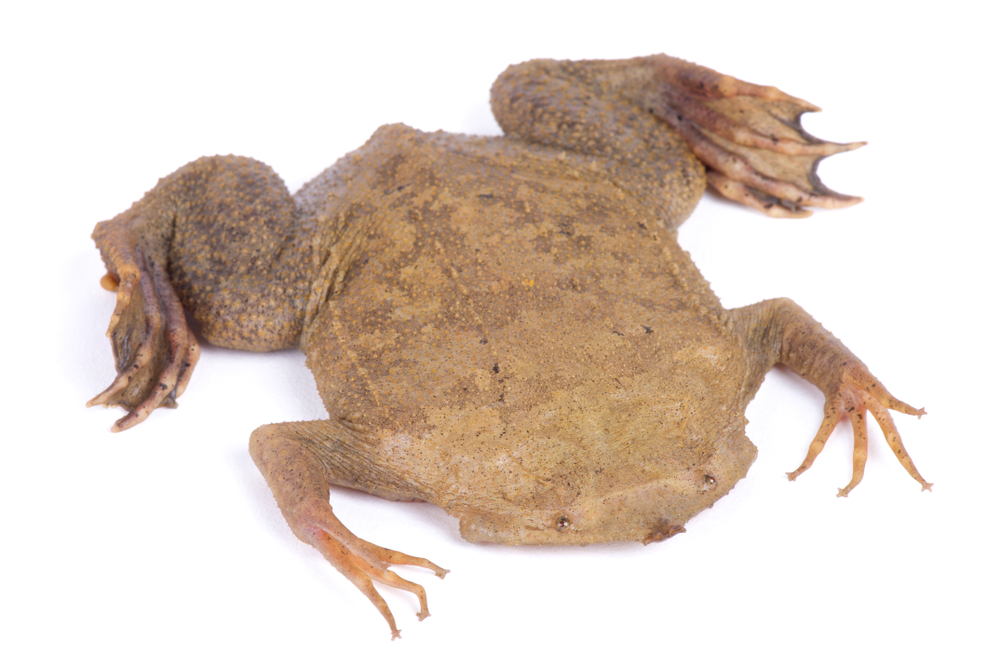
Witches’ cauldrons, bubbling with eerie, unnatural creatures, were a staple of folklore. One real-life animal, the Surinam toad, may have contributed to these creepy legends. Unlike most amphibians, this toad incubates its eggs under its skin, with fully formed baby toads eventually emerging from holes in its back. The sight of tiny creatures bursting from a seemingly solid body is unsettling enough to fuel nightmares.
In medieval times, toads were already associated with witchcraft, thought to be omens of dark magic or familiars of witches. Seeing one of these bizarre creatures in action could have easily reinforced fears of supernatural forces at work. Even today, watching a Surinam toad give birth is enough to make some people believe in the paranormal. But witches’ toads weren’t the only animals mistaken for supernatural beings—one strange-looking antelope led people to believe in flying horses.
7. The Saiga Antelope – The Real-Life Pegasus
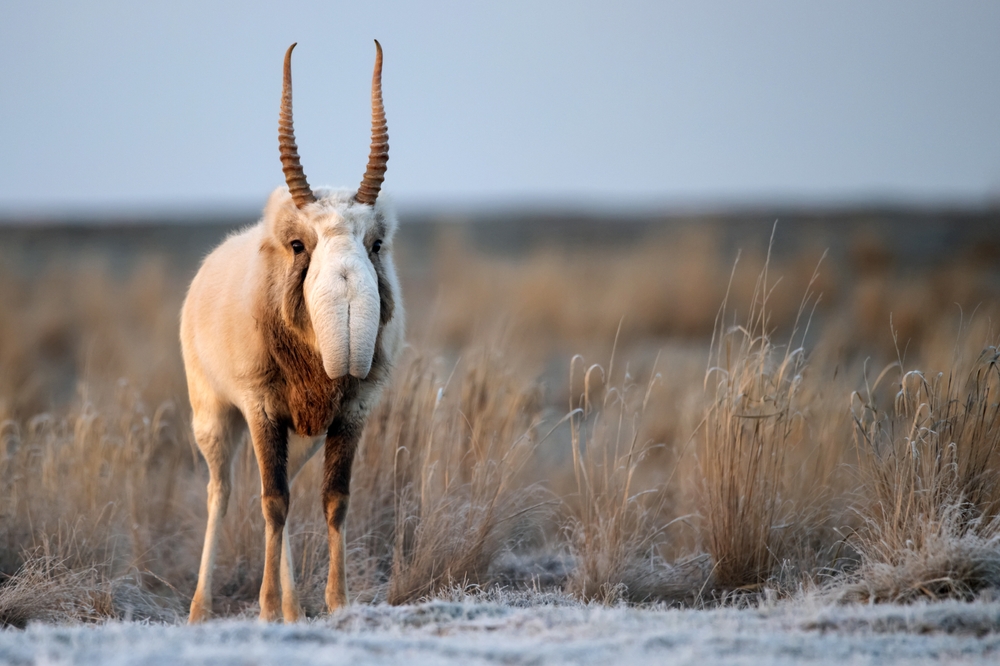
With its oversized, bulbous nose, the saiga antelope looks more like a creature from an alien planet than an earthly animal. Native to Central Asia, this bizarre-looking mammal has an inflatable nose that helps it filter dust and regulate its body temperature. Ancient cave paintings depict mysterious horse-like figures with exaggerated features, leading some historians to believe the saiga might have played a role in the legend of Pegasus.
The myth of winged horses might have been born from a combination of real animals and human imagination. While saigas don’t fly, their ability to sprint at high speeds across vast landscapes makes them seem almost mythical. They are living proof that reality can be just as strange as fantasy. But if one funny-looking antelope could create a legendary flying horse, wait until you hear about the last animal on our list—the strangest of them all.
10. The Platypus – The Animal That Made Scientists Think It Was Fake

When British explorers sent a platypus specimen back to Europe, scientists were convinced it was a hoax. A creature with the bill of a duck, the body of an otter, and the ability to lay eggs? Impossible. Many believed it was a stitched-together fake, like something from a trickster’s workshop.
But the platypus is 100% real, and even stranger than it appears. It has electroreceptors in its bill to detect prey, males have venomous spurs on their legs, and it even glows under UV light. If one animal could make people believe myths were real, it’s this bizarre, living paradox.


